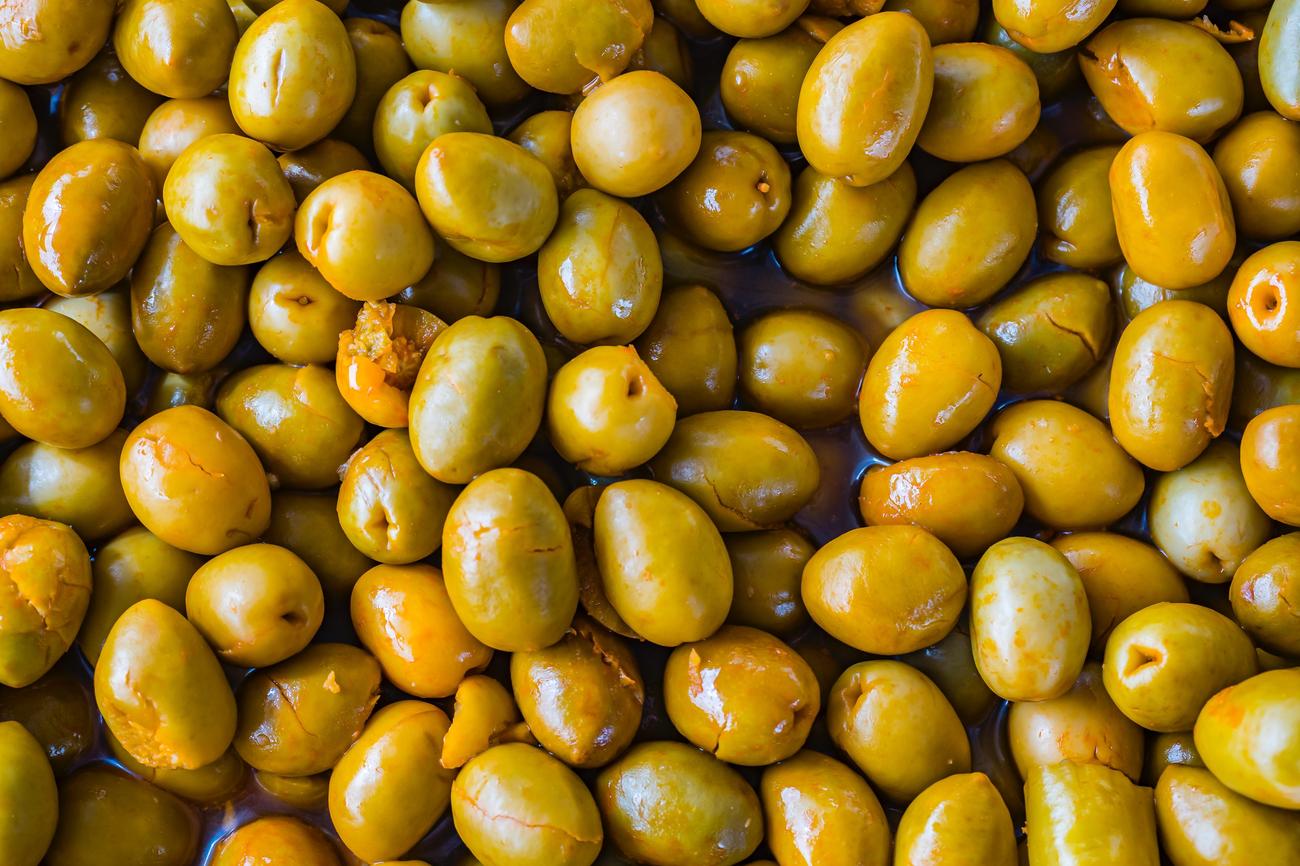Are black olives really as healthy as they seem? It’s time to shed light on the hidden downsides of these popular little fruits. In this article, titled “The Hidden Downsides of Black Olives: Unveiling the Unhealthy Truth,” we delve into the dark side of black olives and uncover the not-so-healthy secrets they hold. While often praised for their rich flavor and antioxidant content, black olives can actually have some surprising drawbacks when it comes to our health. So, let’s dig deep and explore what makes black olives a less than ideal choice for the health-conscious. Prepare to be enlightened!

What is Unhealthy About Black Olives
Black olives might seem like a harmless addition to your meals, but there are some hidden downsides that you should be aware of. While they do offer certain health benefits, it’s important to understand the potential drawbacks as well. In this article, we will explore the less talked about aspects of black olives that you should consider before including them in your diet.
High Sodium Content: A Cautionary Note
Canned black olives, a common form of consumption, can be a significant source of sodium. Excess intake of sodium has been linked to high blood pressure, a risk factor for heart disease and stroke. So, for individuals who need to watch their sodium intake, it’s important to be mindful of the quantity of canned black olives consumed.
“While black olives offer some nutritional benefits, it’s crucial to be cautious about their sodium content, especially for those with high blood pressure.”
Limited Nutritional Value: Not a Powerhouse of Micronutrients
While black olives do contain certain nutrients, they are not considered a significant source of vitamins and minerals. In fact, apart from iron and sodium, they provide less than 1% of the recommended dietary allowance (RDA) for all other nutrients. So, if you’re looking to boost your overall nutrient intake, black olives might not be the most effective choice.
“Although black olives are often praised for their nutritional value, they don’t provide a significant amount of vitamins and minerals, apart from iron and sodium.”
Potential for Allergic Reactions: A Rare Concern
Allergies to olives are relatively rare, but they have been reported in some individuals. If you have a known allergy to olives or any related substances, it’s important to exercise caution and avoid consuming black olives. It’s always advisable to consult with a healthcare professional if you suspect you may have an olive allergy.
“While allergic reactions to olives are uncommon, it’s essential to be aware of potential allergies and consult a healthcare professional if needed.”
Canned vs. Fresh: Understanding the Difference
When it comes to black olives, it’s crucial to consider the difference between canned and fresh options. Canned black olives often undergo processing, which can affect their nutrient content. Fresh olives, on the other hand, retain more of their nutrients and natural flavors. So, if you’re aiming for the healthiest choice, opting for fresh black olives might be a better option.
“When choosing between canned and fresh black olives, it’s important to keep in mind that the processing of canned olives can impact their nutrient content.”
The Verdict
While black olives offer some health benefits, such as being a source of heart-healthy monounsaturated fats and antioxidants, it’s essential to be aware of the potential downsides. Their high sodium content can be problematic for individuals with high blood pressure, and they provide limited nutritional value compared to other foods. If you have any concerns or specific dietary needs, it’s always best to consult with a registered dietitian or healthcare professional.
“While black olives have their merits, it’s important to consider the potential downsides and make informed decisions based on your individual health needs.”
When it comes to olives, did you know there are some fascinating facts waiting to be discovered? If you’re curious about the world of olives, we’ve got you covered with our collection of interesting tidbits and insights. From the various types of olives to their historical significance, you’ll find it all here. Dive into the realm of facts about olives by clicking on this link: facts about olives. Prepare to be amazed as you unlock the secrets of this beloved fruit.
Why Can’t You Buy Fresh Olives?
[youtube v=”oStoeHntfG8″]
The Truth about Fresh Olives and Their Processing
We often wonder why we never see fresh, tree-ripened olives in the produce section of the grocery store. Instead, they are always swimming in salty brine. In fact, it might surprise you to know that black olives are actually green. So, what’s the deal with olives? Let’s explore the fascinating truth behind these salty, oily stone fruits.
Legend has it that the Greek goddess Athena won the naming rights to the city of Athens by gifting olives. However, while the Olea europaea tree is valued for its wood and oil, the taste of the fresh fruit itself is far from pleasant. The main culprit behind this is a bitter compound called European. Ripe olives contain a high concentration of this compound, up to 14 percent by dry weight.
To make olives taste better, professional olive processors and resourceful home cooks have three main options. The first is to soak the olives in water, which slowly leaches away the bitter compound. The second option is to ferment them in a salt brine. Both of these methods, however, take weeks to fully eliminate the bitterness.
The third option is a chemical shortcut involving soaking the olives in sodium hydroxide, commonly known as lye and used in soap making. Sodium hydroxide speeds up the breakdown of the bitter compound, transforming it into less bitter compounds like hydroxytyrosol. This process takes about a week, depending on the specific method used. It’s important to note that the lye doesn’t end up in your food since the olives are thoroughly rinsed before being packed in salt brine for preservation.
But why do most purchased olives come in shades of black? Well, it turns out that the familiar canned olives we know and love didn’t come off the tree looking that way. In the late 1800s, olives were primarily grown for oil. When a California farmer named Frieda Amon couldn’t use her crop for oil, she came up with a way to sell the bitter fruit instead. By introducing air into the olives during the lye treatment, she exposed them to oxygen. The presence of oxygen triggers chemical reactions that create dark brown or black pigments, giving the olives their characteristic appearance.
However, these pigments can degrade over time, resulting in an unappetizing mottled look. To maintain the uniform black appearance, growers add a fixative known as ferrous gluconate. The iron in ferrous gluconate forms a complex that prevents the olives from turning brown. This process is known as ripe olive styles or California style.
Not all lye-treated olives turn black. If there is no oxygen present during the treatment, the color-changing reactions don’t occur, and the olives remain green.
In terms of nutritional content, black olives are not a significant source of vitamins and minerals, except for iron and sodium. They are also known to be high in sodium, which can be problematic for individuals with high blood pressure. While fresh olives may have higher nutrient content compared to canned ones, it’s important to consult a healthcare professional for advice.
In summary, the process of making olives palatable involves removing the bitter compounds through soaking or fermenting, or using a chemical treatment like lye. The black color of most purchased olives is achieved through exposure to oxygen during the treatment process, with the addition of a fixative to maintain their appearance. While the nutritional value of olives may vary, they are still a tasty addition to dishes like pizza, even for those who claim pineapple doesn’t belong. So, the next time you enjoy olives, remember to thank chemistry for making them delicious.
“The process of making olives palatable involves removing the bitterness through soaking or fermenting, or using a chemical treatment like lye.”

FAQ
Q: Are black olives a good source of vitamins and minerals?
A: No, canned black olives are a poor source of vitamins and minerals, providing less than 1% of the recommended dietary allowance (RDA) for all nutrients except iron and sodium.
Q: Can consuming black olives aid in weight loss?
A: According to a study published in the Journal of Medicinal Food, consuming olives may aid in weight loss.
Q: Do black olives contain heart-healthy fats?
A: Yes, black olives contain heart-healthy monounsaturated fats, which may help lower LDL cholesterol levels.
Q: Are there any potential downsides to eating black olives?
A: Excess intake of sodium from canned black olives may lead to high blood pressure. Additionally, while allergy to olives is rare, there have been some reports.
Q: What are the health benefits of olives?
A: Olives are rich in antioxidants, which have been shown to reduce the risk of chronic illnesses such as heart disease and cancer. They are also a good source of iron, which is important for carrying oxygen to red blood cells.
- Revolution Space: Disruptive Ion Propulsion Transforming Satellites - April 24, 2025
- Race Through Space: Fun Family Game for Kids - April 24, 2025
- Unlocking the Universe: reading about stars 6th grade Guide - April 24, 2025
















